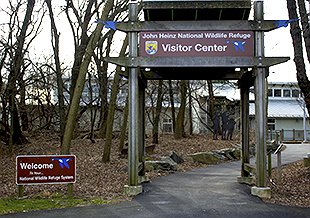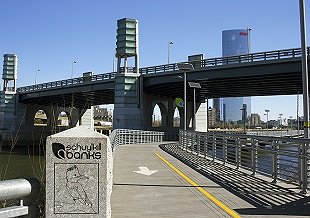Educator Tips to Inspire Outdoor Adventures for Kids!
There are many fun ways to spend valuable outdoor time with your little ones this Fall and Winter. We reached out to educators that lead programming at three of the Alliance for Watershed Education Centers, asking them to share their insights on getting outdoors and engaging young tots about the natural world around them.
Little Explorers at Bartram’s Garden, Nature Tots at John Heinz National Wildlife Refuge and Tiny Trekkers based at Cobbs Creek Park all host monthly meet-ups of nature-based activities for preschoolers. The season for these gatherings is coming to a close but many trails and park grounds are open all year long with events and programs returning in the Spring.
Read our interview with Leslie Gale from Bartram’s Garden and plan your next trip with GoPhillyGo.
What is your favorite lesson to teach and why?
I have so many lessons or themes I like to teach! It's hard to choose, but I probably love pollination the most. I have a childhood love of insects and bees and butterflies are such charismatic mini-fauna! I enjoy seeing kids understand the ways animals and plants are interdependent, and pollination is a great example of that. I also enjoy seeing kids who are afraid of bees learning the difference between fear and respect. I feel like respect steps right into admiration and awe.
Are there any books about the environment or nature that you recommend for pre-k age?
Books for young children can sometimes be a little pedantic when they should be fun and engaging. It's about sparking interest in the natural world, art, and language. I tend to go to books that have animals as characters, that tell stories that help us spin off predator-prey relationships or habitat needs. Mostly I like books that make us laugh together. Some of my favorites are The Wolf, the Duck, and the Mouse by Mac Barnett and Jon Klassen, It's My Tree by Corinne Chalmeau, Big Wolf and Little Wolf by Nadine Brun-Cosme, and The Big House and the Little House but Yoshi Ueno. For gardening with kids, I like Lola Plants a Garden by Anna McQuinn and The Ugly Vegetables by Grace Lin.
What is a fun activity folks can do at home?
There are so many things to do at home!
- Looking for plants and bugs in sidewalk cracks. Going on a bug hunt in potted plants: beetle grubs, ants, roly polies, and millipedes.
- Planting seeds to watch them germinate. You can use dried beans that you have in the kitchen. Lentils work really well. You can soak them, drain them, then put them in a clear jar, or you can sprout them between damp paper towels. To understand where that baby plant comes from, you can dissect a seed to find the embryo. Big lima beans are great. Just soak them in water overnight, then carefully slide off the seed coat. Slide the two halves apart, and you should be able to see the embryo stem and leaves. You can try other seeds, but you want them to be big enough for you to see them easily.
- Water plants together. Unless the plants are fussy specialists, watering is something kids can do competently.
- Listening for birds. I call it "eavesdropping" on the conversations above our heads. Most city parks have some fairly interesting songs: starlings, robins, pigeons and mourning doves, cardinals, and crows. I have a mockingbird in my very hard South Philly neighborhood, and I've counted 15 different songs from him. You can try to copy, sing, or dance to bird songs!
What is your advice to a parent who might be a little hesitant to take a small child on a trail or in a park?
I can understand why parents are nervous sometimes about approaching the outdoors with a little one. I grew up in a rural area in central Florida, and my dad, out of caution, taught me to be afraid of all snakes. It took a while for me to understand that he was keeping me safe, and that I could learn to understand who was venomous, who was not, and to give all creatures respect. That's the refrain when I introduce kids to bees: respect them, give them what they need to be safe, and we don't have to be afraid. I think parents can start to feel that way themselves then communicate that by example to their little ones. When you flip the story from needing to protect yourself to protecting the wildlife, it's no longer about being afraid, but about being a partner of nature, a friend in the natural world.
I would also recommend that parents are never afraid to say "I don't know" when their child asks a question they don't know. "I don't know, but let's learn about it together."
What is your favorite park, nature-space in the Philadelphia area, to take a pre-k age child?
Bartram's Garden, of course! There are two tree swings, a pond with frogs and dragonflies, and a great flower garden for butterfly and hummingbird sightings. I would also add the Woodland Cemetery for West Philadelphia. The main drive is stroller friendly, there are amazing birds, beautiful flowers and butterflies, and you can turn around easily when you get tired.
Do you have any tips for nature activities in the fall or winter?
Looking for nests in the bare trees! You can see who raised babies over the summer when the leaves are gone. A fall leaf color walk. I like to use paint chips (or cards) from the hardware store to find very specific colors. Also, looking for footprints in the snow or mud.


